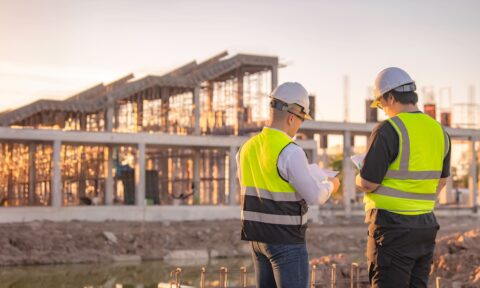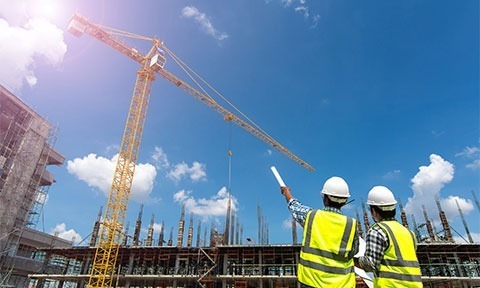Basic Naval Architecture – Days
- Purpose: Provide conversion or refresher training for science and engineering graduates and experienced draughtsmen in ship design and shipbuilding practice. Broad understanding of ship behavior under various conditions. Intended for engineers and research scientists needing to understand ship behavior at sea. Innovative course balancing theory and practice. Personnel from ship management, oil companies, classification societies, and ship builders benefit from attending.
Overview
The online Naval Architecture Training course aims to provide conversion or refresher training for science and engineering graduates, experienced draughtsmen, and professionals involved in ship design and ship systems. The course covers a broad understanding of ship behavior under various conditions, including basic ship definitions, hull girder components, hydrostatics, and hydrodynamics. It is designed for engineers and research scientists seeking to comprehend ship behavior at sea, with a focus on theory and practice. The course includes lectures on stability, damage survivability, resistance, propulsion, and sea-keeping, delivered by experienced industry professionals over a 3-day duration.
Who should attend
Engineers, Scientists, Ship Management Personnel, Oil Company Personnel, Classification Society Personnel, Ship Builders
Course Content
Online Naval Architecture Training
Naval Architecture Training
ABOUT THE COURSE
The primary objective of this short course is to provide conversion or refresher training for science and engineering graduates and experienced draughtsmen who hold active line responsibilities in the design of ships and ship systems and in shipbuilding practice. The course is designed in such a way that at the end of the lectures, the person will have a very broad understanding of the behaviour of ships under a variety of loading and operating conditions. The syllabus will include: basic definitions of ships, structural components of the hull girder, general arrangement, ships as functional blocks, hydrostatics & hydrodynamics. The course is intended for practising engineers and research scientists who need to understand the concepts behind the behaviour of ships & ships system at sea.
WHO SHOULD ATTEND
Engineers and scientists involved in the design of ships and ship systems. Personnel from ship management companies, oil companies, classification societies and ship builders will benefits from attending this course. The course is innovative in both content & structure with a careful balance of theory & practice.
PROGRAMME
Day 1
09.00 – 10.30 Lecture 1: Introduction and definitions Instructor: Ian Winkle
Axes and principal dimensions, abbreviations and vector references. Form Coefficients. TPC, MCT1cm. Displacement / Lightship /Deadweight. Hydrostatic. Lines, Body Plan and GA. Static Balance; Volume and Centroid Calculations. Worked examples Moment Calculations.
10.30 -10.45 Break
10.45 -12.15 Lecture 2: Initial Stability Instructor: Ian Winkle
Trim and Heel. Metacentres. Centre of Floatation. Conditions of Stability – vectors GZ and GM – Stable Neutral and Unstable. Vector relationship KB+BM = KG+KM. BM = I/V. I for simple shapes and parallel axis correction – worked examples. Three Sinkage/Trim examples.
12.15 – 12.45 Lunch
12.45 – 14.15 Lecture 3: Large Angle Stability Instructor: Ian Winkle
Statical Stability curves and their Characteristics. KN, GZ, GG1 Correction. IMO Requirements. Wind heel and cargo shift. Inclining Experiment. Free Surface Effect. Effects of Beam, Freeboard and VCG. Weights on derricks/cranes etc. Some simple tutorial examples.
Day 2
09:00-10.30 Lecture 4: Damage Stability
Instructor: Ian Winkle
Sinkage and trim effects. Permeability; Lostbuoyancy or Added Weight. Transverse and longitudinal
subdivision – importance of cross flooding. Floodable Length Curves. Comparison between Deterministic and Probabilistic approaches to Damage Survivability.
10.30 -10.45 Break
10.45-12.15 Lecture 5: Resistance and Propulsion
Instructor: Ian Winkle
Components of Resistance. Model tests. Effects of surface Roughness, fluid Density, L, B, Cp, WSA,
Speed. Friction Lines. Residuary Resistance. Hull Roughness, Service Margin. Propeller Efficiency and QPC, EHP, DHP, SHP, Installed Power, Margins. Measured Mile Trials.
12.15 – 12.45 Lunch
12.45-14.15 Lecture 6: Sea Keeping-I
Instructor: Professor D.Sen
Description of Ocean Waves: Regular and Irregular Waves; Single and Multi-Degree Equations of
Motion for a Ship
Day 3
09:00-10.30 Lecture 7: Sea Keeping-II
Instructor: Professor D.Sen
Ship Motions in Regular waves, RAO; Ship Motionsin Irregular Waves, Response Spectra,
Derived Motions.
10.30 -10.45 Break
10:45-12:15 Lecture 8: Manoveoring – Instructor: Professor D.Sen
Directional Stability; Equation of Motion in Horizontal Plane, Hydrodynamic
Derivatives,Stability Index
CVs of Lecturers
Ian E Winkle
Ian E Winkle BSc CEng, MRINA recently retired as a Senior Lecturer in the Dept of Naval Architecture & Marine Engineering, Universities of Glasgow & Strathclyde after 26 years involved in Naval Architecture, Ship Design and Ship Production. Before joining the Universities of Glasgow & Strathclyde Mr Winkle worked with Vicker’s Ltd Shipbuilding Group at their Walker Naval Yard and St. Albans Ship Model Experiment Tank before joining Lloyd’s Register of Shipping for a year as a Travelling Scholar. He then spent nearly 4 years working as a Research Officer in the Production Division of the British Ship Research Association, developing new fabrication techniques, before becoming Principal Lecturer in the Dept of Maritime Studies at the Northern Ireland Polytechnic. His areas of research interest include Stability of Damaged Ro-Ro Vessels – most notably the development of the ‘Glasgow Concept’ and the Fabrication of Steel and GRP Ship Structures using Toughened Structural Adhesives, much of which has been undertaken as principal investigator of a range of EPSRC projects.
Professor. D Sen
Prof. D Sen, B.Tech, M.Eng., Ph.D., FRINA, FIE is a Professor and former head
of the Department of Ocean Engineering and Naval Architecture, as well as former
head of the Centre for Oceans, Rivers, Land and Atmospheric Sciences, Indian Institute
of Technology Kharagpur India. He has completed his graduate studies (master’s
and Ph.D.) from Memorial University of Newfoundland, Canada during 1982- 1988.
Since 1988, he is engaged in teaching and research at Indian Institute of Technology
Madras (1988-1991) and Indian Institute of Technology Kharagpur (1991 – present).
Prior to proceeding for graduate studies, he has worked for about 4 years (1977-1981) in
a large shipbuilding industry. His main area of expertise is in marine hydrodynamics,
with specific applications in wavestructure interactions, sea-keeping and
maneuverability. He has authored a large number of papers in reputed journals
such as Journal of Ship Research, Applied Ocean Research, and also in many wellknown international conferences. He is presently in the editorial board of two international journals. He has successfully completed many sponsored research and industrial consultancy projects. He was
Principal Coordinator of the National Program in Marine Hydrodynamics during 2007-2014, a national programme under the Naval research Board for coordinating developments in marine hydrodynamics within India. He was the leader of the R&D project on development of India’s first
indigenously developed AUV. He has been a member of a large number of national and
international committees including the AUV division of ECOR committee. One of his main
interests is to disseminate knowledge on practical state-of-art applications of
hydrodynamics in marine design
Duration: 3 Days
Cost: £595 + VAT
Online Naval Architecture Training Course.
Naval Architecture Online Training Course



